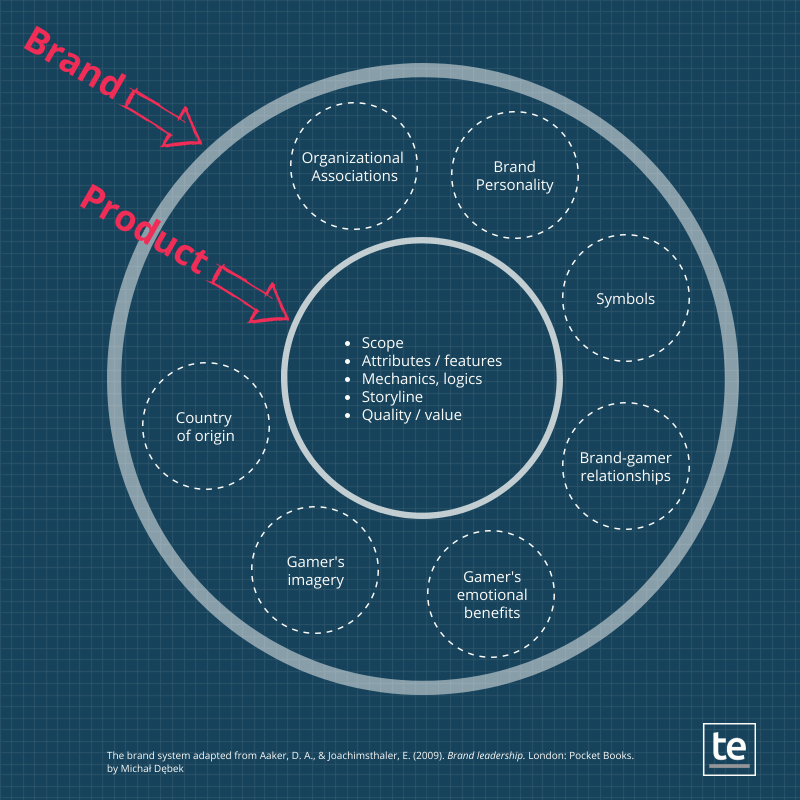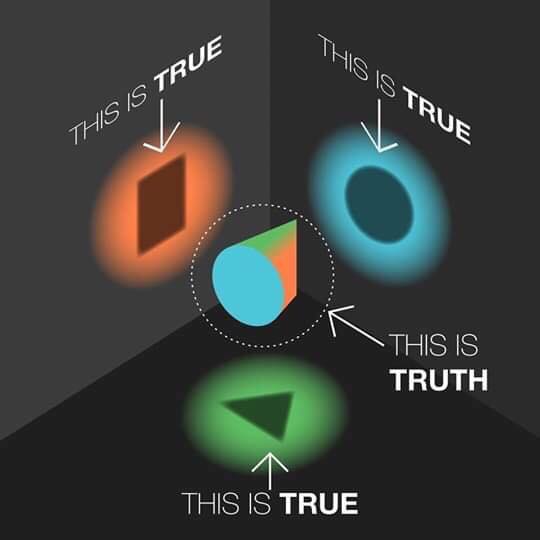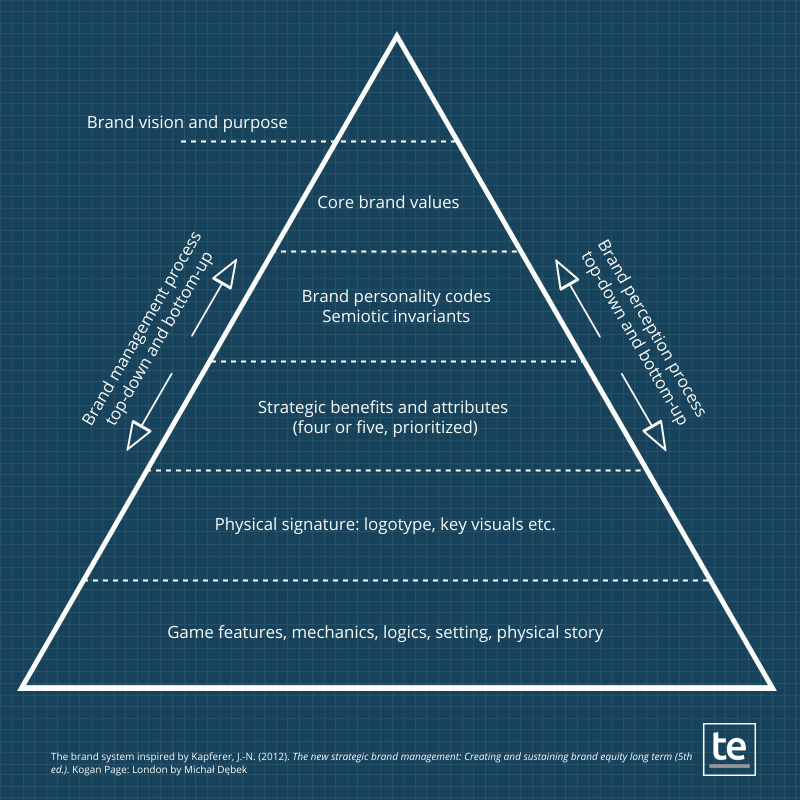How to Create a Brand that Captivates Millions of Gamers?
- 20 września, 2019
- Michał Dębek

Who wouldn’t like to repeat the successes of such successful brands in the VG industry as Call of Duty, GTA / Red Dead Redemption, Hitman, Civilization, Age of Empires or Total War? The key to understand the market performance of these series lies not only in the functional analysis of a specific branded product. They’re all great games, no doubt. But there is more than meets the eye.
It is not a secret that each of these brands is backed by huge budgets allocated in production and marketing. Money play an increasing role in VG, but dollars and quality products are not the only ingredients of the winning formula.
To better understand the iconic brands – more deeply, and in a modern, holistic way – it is necessary to look into the very construction of such brands and their general marketing communications. If you take a closer look, you’ll find out that
creation and management of meaning is the backbone for the great successes of all of the above-mntioned brands.
And the meaning may be even more important than features. Why? Because in saturated, highly competitive markets – just as most of today’s VG markets – the cases of brand differentiation achieved solely by the differences in the games themselves are few and far between. Sadly, even with a unique and valuable set of features, there is no way to stop other developers from copying them sooner or later. This showcases the need to control, if not carefully design, your brand and the meaning it carries.
As Margaret Mark and Carol Pearson (former V.P. of Young & Rubicam Advertising, and depth psychologist respectively) puts it: “what your brand means to people will be every bit as important as its function—if not more so—because it is meaning that tells us »this one feels right« or »this one’s for me«. Meaning speaks to the feeling or intuitive side of the public; it creates an emotional affinity.”

In other words: you may think of developing another first-person shooter or another sandbox city-builder packed with features present in games branded by category leaders. You may have quite a budget, too. But this is just the beginning. Nowadays you have to think what your brand will mean to gamers all over the world.
There was a time…
Some of you may remember the times when success in VG required neither marketing expertise nor huge capital, just as I vividly remember the gaming industry in the 1980’s and early nineties. There was a constant, insatiable demand for games – anything that shipped and was remotely playable was fine. Although the capacity of markets was a thousand times smaller than today, the demand was still extremely high, and the supply rather limited. It was a time of masterpieces and uncluttered markets. Each game was distinctly different from the others. The branding was simply built on the game features, and hardly ever created in a sophisticated way.
Nowadays products serving the same demands – needs and wants of players – are endless. Look at city-builders, for example. Cities Skylines, Sim City, Anno series, Cliff Empire, Foundation – they’re all different games, of course. But they all cater to the need of creation, ruling and management. Take World of Tanks, War Thunder or Fortnite and Apex Legends – they’re all about the need for rivalry, competition, achievements and social comparison.
Then how to attract gamers and ultimately make them play your game? By features? By price? By a brand, with its meaning and a myth behind it? Everything combined? Let’s see!
What is a brand nowadays?
The concept of a brand is surprisingly vague. Seth Godin argues that it’s “the set of expectations, memories, stories and relationships that, taken together, account for a consumer’s decision to choose one product or service over another (…)” David Ogilvy, the world renowned advertising guru, said that the brand is “the intangible sum of a product’s attributes: its name, packaging, and price, its history, its reputation, and the way it’s advertised.” Mark and Pearson claimed that
“the brand is a repository, not merely of functional characteristics, but of meaning and value.”
Traditionalists, as Philip Kotler, treat a brand as “a name, term, sign, symbol, or design or a combination of them (…)”. There are tons of various definitions. However, in modern marketing, there is a strong emphasis on the customer (or, more specifically in the VG industry, the gamer) expectations, memories, stories, meaning, value… and other intangibles.
How to think about branding in VG industry?
Remember the “Law of Perception” by Al Ries and Jack Trout? This frequently cited “marketing law” states that “marketing is not a battle of products, it’s a battle of perceptions.” That’s partially true, and such a statement may be a great inspiration; especially if you compete on mature, saturated markets.
There is a caveat. Beware of today’s “marketing gurus”: it doesn’t mean that the classic McCarthy’s / Kotlerian 4P marketing mix is dead. On the contrary – the price of the game has to be precisely adequate to its genre, quality, etc.; promotion has to be optimal; your people have to do the best they can. Finally – the product, a game – must be the best your studio can develop. There is no leniency. You need to keep your nose to grindstone.
Your game must be at least good enough on the particular market, which means that it must meet the points of parity in its category.
This means it must meet various mandatories for the game to be a legitimate competitor in its specific category in the eyes of consumers-gamers. But this is only the first step to success.
You also have to convince gamers that your game meets their needs and motivations better than your competition;
even if it comes with a bunch of generic features. „Branding is about taking something common and improving upon it in ways that make it more valuable and meaningful”, said Scott Bedbury, former V.P. at Starbucks. That hint shall also not to be forgotten.
As Ries and Trout puts it: “There is no objective reality. There are no facts. There are no best products. All that exists in the world of marketing are perceptions in the minds of the customer or prospect. The perception is the reality. Everything else is an illusion. All truth is relative. Relative to your mind or the mind of another human being.” Seems familiar? “There is no spoon”, remember?

Look at the Call of Duty franchise. Is it the best first-person shooter – as a product – ever? And is it the most valuable person shooter – as a brand – ever? These two – the product and the brand – are a bit different stories, right? Of course without calling into a question the quality of the whole line of CoD products, which earned meta scores of up to 94.
VG branding in practice
So, let’s say that you produce an RPG. It’s obvious that you must implement a sound character development mechanics and logic in such a game, right? Everyone knows that. These are the founding blocks of an RPG. For you, as a developer or publisher, that’s the problem. Just because these are the points of parity in the RPG category, all “good enough” RPGs will manage it as best as competitive developers could.
Even the greatest development mechanics and logic won’t guarantee you win the market.
The problem is that you cannot leave them unpolished – because of the competition and players’ high expectations. Neither can you put all your effort into polishing them to perfection. That’s also because of the competition – you can’t beat your competitors that way as every RPG has these features well implemented. What you can do, though, is leave behind the (good enough) features, and focus onto how to manage the perception of your game and brand. To figure out how to tell a convincing, unforgettable marketing story in a way that appeals to the gamers. E.g. that your game is the only RPG where “In the shadow of evil, a hero will rise from the ashes of a fallen empire”, to use Bethesda’s Oblivion as an example.
And here we’ve come to the next level – the archetypal branding. A game – Oblivion, in this case, as well as the whole award-winning Elder Scrolls series – is about a hero, the brand is about hero, a gamer will be a hero: a “fearless protagonists who realize their own special power and go on to take great personal risks in order to change their reality (…) leaving a thumbprint on the world”. However, the question is whether there are reasons for gamers to believe in your promise, so called marketing RTB., or not.
Veterans of the VG industry who managed successful brands – especially from the publishers’ side – know full well that “success depends on creating, nourishing, and continuously reinterpreting a unique and compelling identity or “meaning.”, just as Mark and Pearson argued. The quality of the game, its physical features, and the meaning of its brand are equally compelling (and has to be consistent).

To dream about building the great gaming brand you must first know your target audience’s (gamers’) needs, wants, expectations, memories (e.g. nostalgia, just look at this!), stories, yearnings. We’ve written about such a research process here. Secondly, you have to design a brand that covers those issues by communicating a mix of product(s) features (optimally by combining the points of parity with at least one point of difference) and meaning – the feel, the story, the narrative. All of them based on the myths and the archetypal branding.
Archetypal branding
An archetype, which I explain in the next level of this guide, may serve as a foundation of the whole game concept. From an idea and production process to purely marcom activities such as advertising. Archetypal products and brands are relatively easy to market, as they tap into the gamer’s psyche. They’re easy to recognize and process mentally within the consumer-gamer mind. By implementing archetypal branding you’ll have to work less on convincing players that your game is “the game” and on conveying the meaning into their imagination.
The shift from product-centric, budget-centric or even solely customer-centric thinking, to more holistic marketing in the development of the game, is the prerequisite to compete with the most successful brands in VG industry.
So, stay tuned for the next level of this “how to” guide. See you soon.





